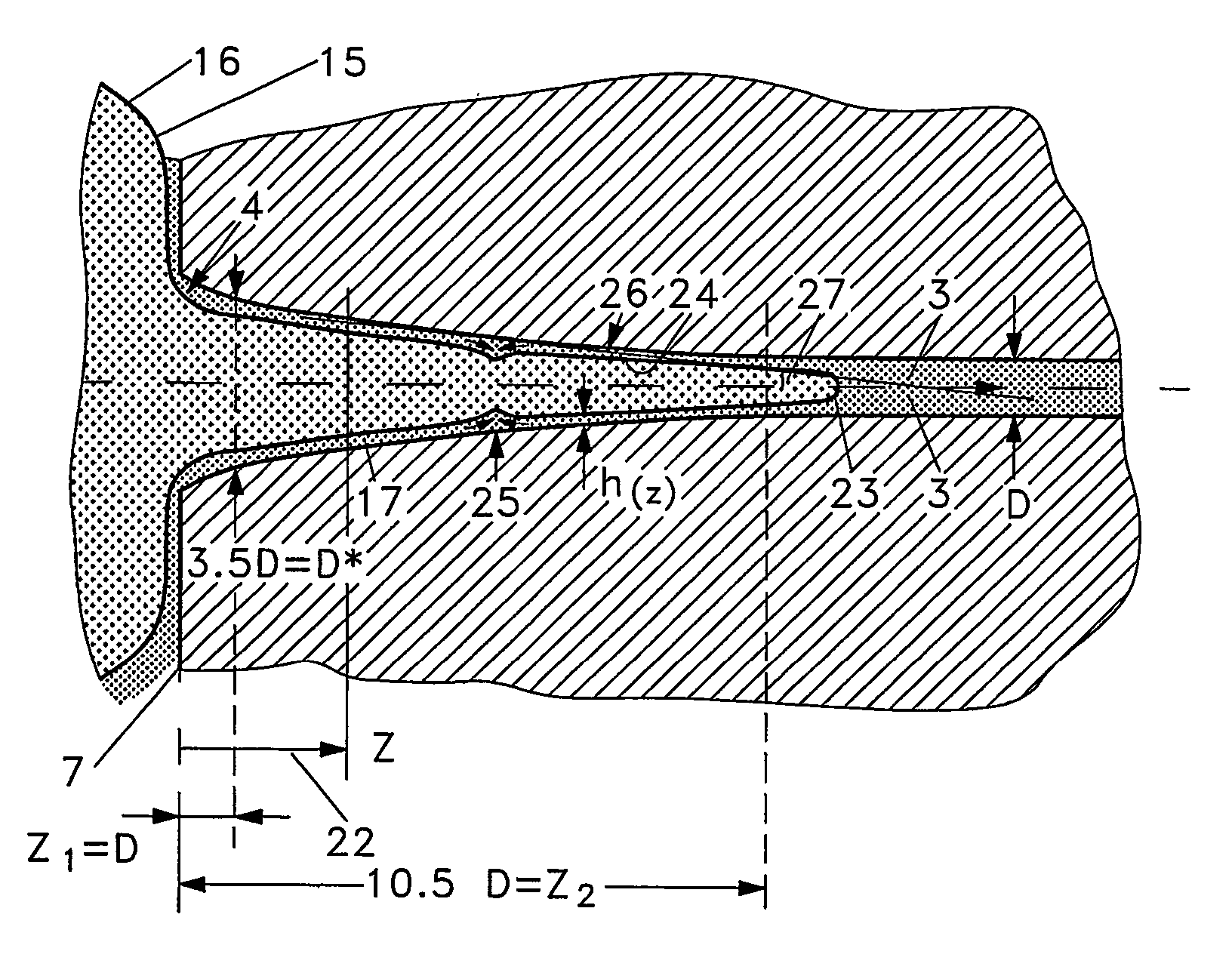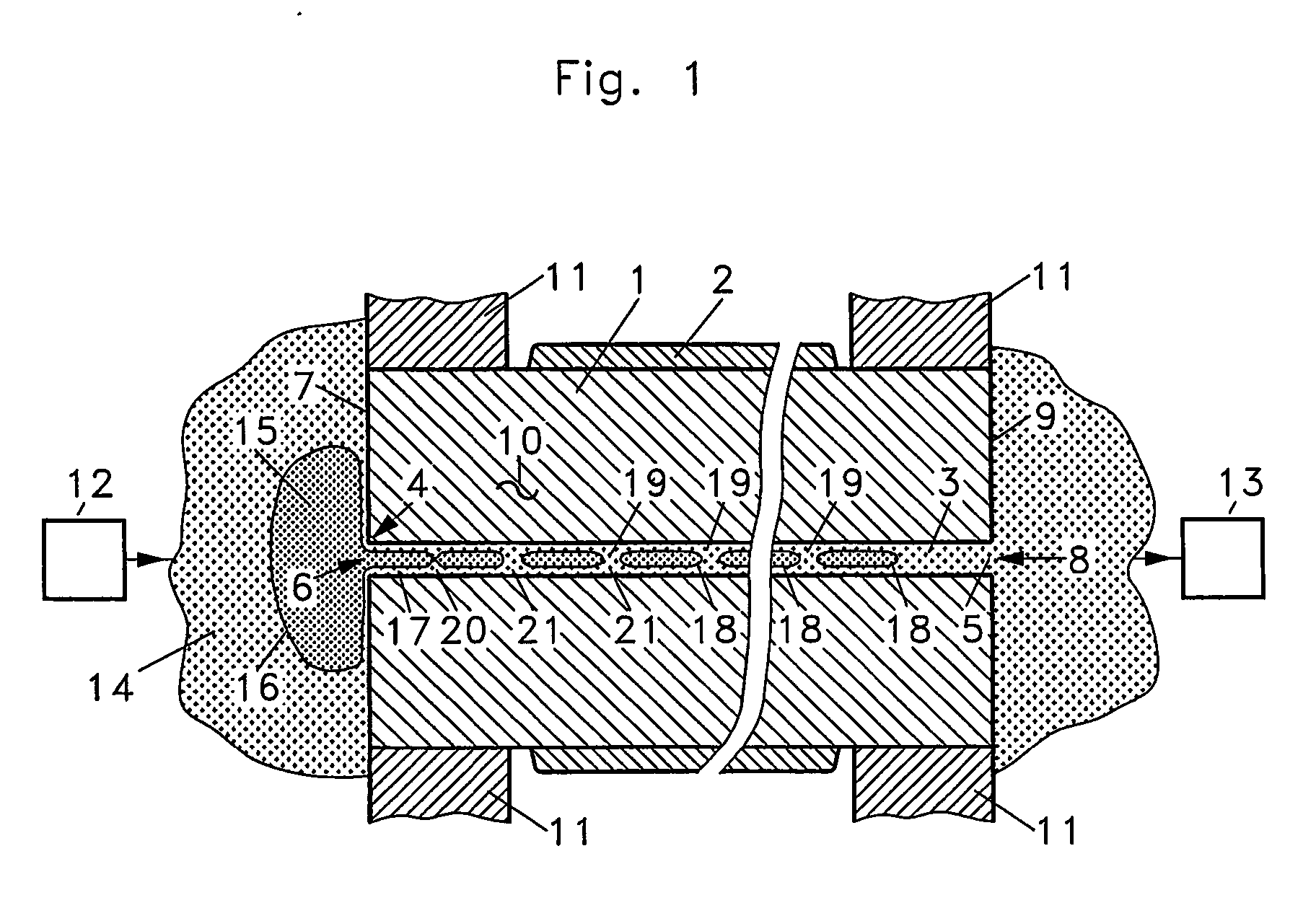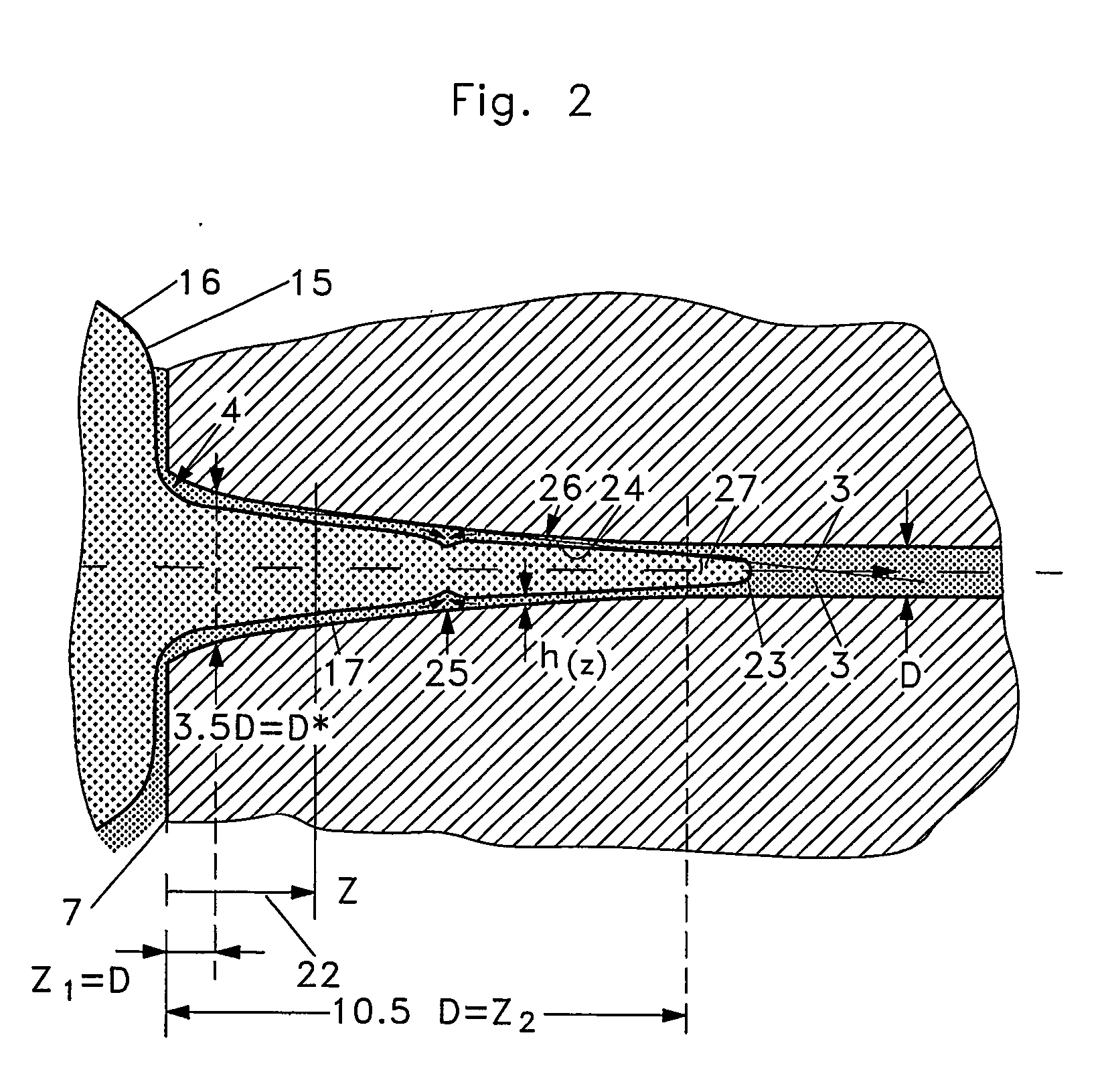Flow restrictor and system for delivering a flow of liquid in a microcapillary
a flow restrictor and microcapillary technology, applied in mechanical apparatus, process and machine control, instruments, etc., can solve the problems of unpredictability, lack of yield and predictability, and the occurrence of bubble fragmentation in microcapillary flow restrictors, so as to reduce the tendency to bubble fragmentation and increase the yield of devices
- Summary
- Abstract
- Description
- Claims
- Application Information
AI Technical Summary
Benefits of technology
Problems solved by technology
Method used
Image
Examples
Embodiment Construction
[0016]FIG. 1 shows a capillary flow restrictor 10 made by cutting off a length of microcapillary which is commercially available from various vendors for use in the field of chemical analysis (gas chromatography, capillary electrophoresis etc).
[0017] The device 10 is an elongated tube whose wall 1 is made from fused silica (quartz glass) with an outer cladding 2 of polyimide. The wall 1 surrounds a flow channel 3 of circular or rectangular (for example, square) cross-section which extends from an inlet 4 to an outlet 5. At the inlet, the flow channel 3 forms an inlet opening 6 in an inlet face 7 of the flow restrictor, and at the outlet it forms an outlet opening 8 in an outlet face 9 of the flow restrictor. Depending on how the device was cut off, the inlet face 7 and the outlet face 9 of the device may be smooth (from abrasive cutting) as shown at 7 or slightly rough (from scoring and breaking) as shown at 9.
[0018] The flow restrictor 10 is mounted in a flow system for deliverin...
PUM
 Login to View More
Login to View More Abstract
Description
Claims
Application Information
 Login to View More
Login to View More - R&D
- Intellectual Property
- Life Sciences
- Materials
- Tech Scout
- Unparalleled Data Quality
- Higher Quality Content
- 60% Fewer Hallucinations
Browse by: Latest US Patents, China's latest patents, Technical Efficacy Thesaurus, Application Domain, Technology Topic, Popular Technical Reports.
© 2025 PatSnap. All rights reserved.Legal|Privacy policy|Modern Slavery Act Transparency Statement|Sitemap|About US| Contact US: help@patsnap.com



